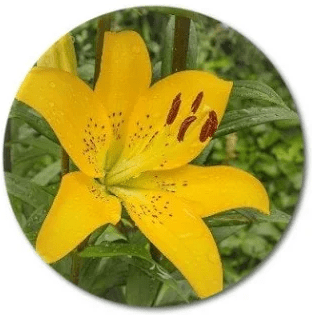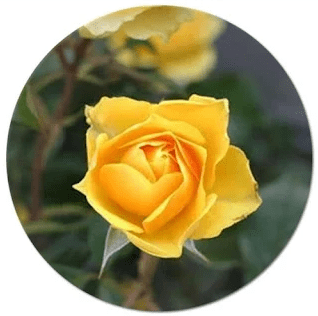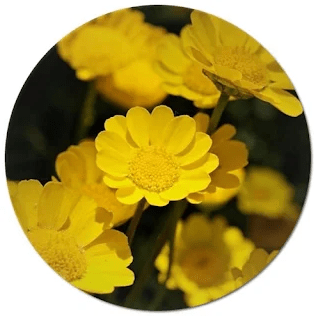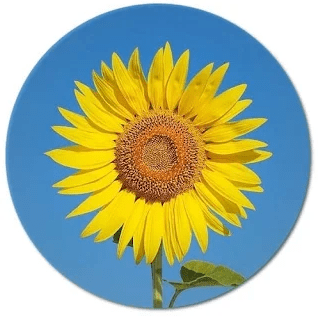What are the types of flowers that bloom in yellow?, All of the following flower and plant species bloom in yellow. An ordered list of flower names with yellow color is given below. Brief information about the plants that bloom flowers of yellow color and yellow tones will also be given. It is possible to list the yellow blooming plants and flower varieties growing in the world as follows. Maybe thousands of yellow flowers grow in our world. Some varieties of plants that bloom in yellow colors grow in pots, and some of the yellow-colored plants with yellow flowers grow in the wild.
Yellow Flowering Plant Names, Some plant varieties bloom in different colors. There are such plants that have incredible yellow and yellow tones. In this article, we will examine the plant species that bloom yellow flowers. According to our research, the plants named below bloom yellow flowers. The names and brief descriptions of the plants in shades of yellow are given below. Yellow flowers >> What are the names of yellow flowering plants?




Numerous plants produce yellow blooms, adding vibrant color to gardens and landscapes. Here are some examples of plants known for their yellow flowers:
- Sunflowers (Helianthus spp.): Sunflowers are large, iconic flowers with bright yellow petals surrounding a dark central disk. They are well-known for their sunny appearance.
- Marigolds (Tagetes spp.): Marigolds are annual flowers that come in various shades of yellow and orange. They are often used in gardens and as companion plants.
- Daffodils (Narcissus spp.): Daffodils are spring-blooming flowers with trumpet-shaped blooms. They come in various shades of yellow and white.
- Tulips (Tulipa spp.): While tulips are available in various colors, there are several yellow varieties, adding a burst of color to spring gardens.
- Forsythia (Forsythia spp.): Forsythia is a deciduous shrub that produces bright yellow flowers in early spring, often before the leaves emerge.
- Black-Eyed Susan (Rudbeckia hirta): Black-Eyed Susan is a perennial flower with yellow petals and a dark brown central cone. It is a native wildflower in North America.
- Coreopsis (Coreopsis spp.): Coreopsis, also known as tickseed, is a perennial with daisy-like yellow flowers. It is a popular choice for gardens and landscapes.
- Lantana (Lantana camara): Lantana is a shrub with clusters of small, tubular flowers that change color as they age. Many varieties feature yellow blooms.
- Goldenrod (Solidago spp.): Goldenrod is a perennial plant with plume-like clusters of small yellow flowers. It blooms in late summer and fall.
- Zinnia (Zinnia spp.): Zinnias are annual flowers available in various colors, including many shades of yellow. They are popular for their bright, long-lasting blooms.
- Primrose (Primula spp.): Primroses come in different colors, including various shades of yellow. They are often used as early spring bloomers.
- Yarrow (Achillea spp.): Yarrow is a perennial with clusters of tiny, flat-topped flowers. Some varieties have yellow blooms.
These are just a few examples, and there are many more plants with yellow flowers, ranging from annuals and perennials to shrubs and trees. When planning a garden, you can choose from a variety of yellow-flowering plants to create a visually appealing and colorful landscape.
Which potted flowers are yellow?
Several flowers with yellow blooms are well-suited for growing in pots or containers. Here are some potted flowers known for their yellow flowers:
- Geranium (Pelargonium spp.): Geraniums are popular potted plants with clusters of brightly colored flowers, including varieties with yellow blooms.
- Daffodils (Narcissus spp.): Daffodils, with their trumpet-shaped yellow flowers, can be grown in pots for a burst of color in early spring.
- Marigold (Tagetes spp.): Marigolds are annual flowers available in compact varieties that are suitable for container gardening. They come in various shades of yellow and orange.
- Petunia (Petunia spp.): Petunias are commonly grown in containers and hanging baskets. Many varieties feature yellow blooms.
- Calendula (Calendula officinalis): Also known as pot marigold, calendula has bright yellow or orange flowers and is well-suited for container gardening.
- Lantana (Lantana camara): Lantana is a shrubby plant that produces clusters of small, tubular flowers that change color as they age. Some varieties have yellow blooms.
- Sunpatiens (Impatiens spp.): Sunpatiens are a sun-loving variety of impatiens, and they come in various colors, including shades of yellow.
- Primrose (Primula spp.): Primroses are early spring bloomers that can be grown in pots, and they come in various colors, including yellow.
- Zinnia (Zinnia spp.): Zinnias are annual flowers that are available in many colors, including various shades of yellow. They are well-suited for container gardens.
- Chrysanthemum (Chrysanthemum spp.): Some varieties of chrysanthemums, or mums, have yellow flowers and can be grown in containers.
- Viola (Viola spp.): Violas, also known as pansies, come in various colors, including shades of yellow. They are suitable for both garden beds and containers.
- Bidens (Bidens ferulifolia): Bidens, also known as tickseed, is a trailing plant with small, yellow flowers, making it a good choice for hanging baskets and containers.
When choosing potted flowers, consider the sunlight requirements, soil preferences, and the size of the container to ensure optimal growth. Additionally, regular watering and proper care will help these plants thrive in containers, providing a beautiful display of yellow bloms.
What early blooming shrub has yellow flowers?
Forsythia is a well-known early blooming shrub that produces bright yellow flowers. Forsythia (genus Forsythia) is valued for its vibrant display of golden-yellow blossoms that appear in early spring, often before the leaves emerge. The flowers typically cover the branches, creating a striking and cheerful appearance. Key features of Forsythia include:
- Blooming Time: Forsythia is one of the first shrubs to bloom in spring, generally flowering in March or April, depending on the local climate.
- Flower Appearance: The flowers are usually small and tubular, arranged in clusters along the branches. They can completely cover the shrub, creating a stunning visual effect.
- Foliage: After the flowers fade, Forsythia produces green foliage, creating a more traditional shrub appearance for the rest of the growing season.
- Size: Forsythia shrubs can vary in size, but many varieties are medium to large, making them suitable for hedges, borders, or as standalone specimens in the landscape.
- Growing Conditions: Forsythia is generally hardy and adaptable, thriving in well-draining soil and full sun to partial shade. Yellow Flowers >
Forsythia is a popular choice for early spring color in gardens and landscapes. It not only adds visual interest but also signals the arrival of spring with its vibrant yellow blooms. Keep in mind that pruning immediately after flowering can help shape the shrub and encourage robust growth for the following season.
What plant has yellow hanging flowers?
One plant with yellow hanging flowers is the “Golden Trumpet” or “Allamanda cathartica.” Allamanda is a tropical evergreen shrub or vine known for its large, trumpet-shaped flowers that hang gracefully from the branches. The vibrant yellow flowers make it a popular choice for adding a splash of color to gardens and landscapes in warm climates. Some key features of Allamanda include:
- Flower Appearance: The trumpet-shaped flowers can be quite large, and they hang down from the stems, giving the plant an elegant appearance. The yellow color is bright and eye-catching.
- Foliage: Allamanda has glossy, green leaves that complement the yellow blooms.
- Growth Habit: Depending on the specific variety and growing conditions, Allamanda can be cultivated as a shrub or a climbing vine. When grown as a vine, it may require support such as a trellis.
- Growing Conditions: Allamanda prefers warm, tropical climates and thrives in full sun. It requires well-draining soil and regular watering.
- Pruning: Pruning can help shape the plant and encourage more blooms. It’s important to note that all parts of the Allamanda plant are toxic if ingested, so care should be taken to keep it out of reach of children and pets.
Allamanda is often used in landscaping to create a tropical feel, and it can be grown in containers, as a hedge, or as a climbing vine on a pergola or trellis. It’s important to consider the climate and space requirements when choosing and caring for Allamanda.
Wild yellow flower names
There are numerous wildflowers with yellow blossoms found in various regions around the world. Here are some examples of wild yellow flowers, but keep in mind that specific species can vary depending on the geographical location:
- Dandelion (Taraxacum officinale): Dandelions are common wildflowers with distinctive yellow flowers. They are known for their bright, sun-like appearance and fluffy seed heads.
- Buttercup (Ranunculus spp.): Buttercups are wildflowers with glossy yellow petals. They are often found in meadows and grassy areas.
- Black-Eyed Susan (Rudbeckia hirta): Black-Eyed Susan is a North American wildflower with yellow or orange petals and a dark central cone.
- Sunflower (Helianthus annuus): While sunflowers are also cultivated, they can be found growing wild in some regions. They are known for their large, yellow flower heads.
- Goldenrod (Solidago spp.): Goldenrod is a wildflower with plume-like clusters of tiny yellow flowers. It often blooms in late summer and fall.
- Bird’s-Foot Trefoil (Lotus corniculatus): This wildflower has clusters of yellow pea-like flowers and is often found in grasslands.
- Common Evening Primrose (Oenothera biennis): Evening primrose has yellow, fragrant flowers that open in the evening. It’s a biennial plant found in various habitats.
- Arnica (Arnica spp.): Arnica produces bright yellow flowers and is often found in mountainous regions. Some species are known for their medicinal properties.
- Wild Mustard (Brassica spp.): Wild mustard plants have clusters of small yellow flowers and are common in fields and along roadsides.
- Creeping Jenny (Lysimachia nummularia): Creeping Jenny is a low-growing plant with bright yellow flowers and is often used as ground cover.
- Common Ragwort (Senecio jacobaea): Ragwort has clusters of yellow daisy-like flowers and is commonly found in open areas.
- Mimulus (Mimulus spp.): Also known as monkeyflowers, Mimulus species have tubular yellow flowers and are often found near streams or wet areas.
